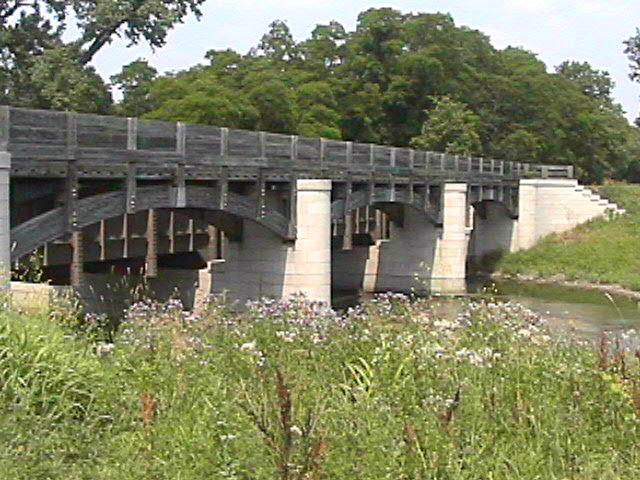To provide observations and information on the emerging fields of landscape scale conservation, heritage preservation, and sustainable community development.
Newsletter
Stay up-to-date with the latest nature, culture and community news.
We won’t spam you or share your information. Newsletters are sent approximately 10 times a year. Unsubscribe at any time.

National Heritage Areas at Thirty: Help tell the Story
2014 marks the 30th anniversary of the National Heritage Areas program. Conceived as a way to cross the culture – nature divide, heritage areas stretch beyond political boundaries to tell landscape scale histories and protect regional environmental resources. The areas tell stories that are too big, too gritty, too alive and too expensive to be confined within a traditional national park unit. Yet, heritage areas have been consistently hammered by shrinking federal budgets, questions about the proper role of government, and even their right to exist. Read more about how the LLO plans to mark this important anniversary.

National Conference Celebrates Innovative Large Landscapes Programs
At the recent National Workshop on Large Landscape Conservation, attendees took time to celebrate the anniversaries of two ground-breaking large landscape projects – National Heritage Areas and the Yellowstone to Yukon Conservation Initiative.

#NHA30: Tales from the Towpaths
National Heritage Areas are conserving roughly a 1,000 miles of canal corridors across the country. These historic waterways and towpaths are becoming tomorrow’s network of trails and blue ways, connecting population centers to parks and historical sites of national, state, and local importance. Find out more the partnership model of management and the entrepreneurial strategies key to NHA success in this guess post.

#NHA30: National Heritage Areas Front and Center in Recent Presidential Proclamation
According to President Obama, “For decades, the National Heritage Areas Program has enabled our Nation to set aside places that define our shared history and that will help future generations understand what it means to be American.” Find out more about why he recognized this important program on its thirtieth anniversary as part of our #NHA30 coverage.
NHA@30: Program Legislation for National Heritage Areas
Congress designated the first National Heritage Corridor 30 years ago, but still has yet to pass comprehensive heritage area program legislation. While the lack of a unifying policy framework has not hindered new heritage area designations, it has been raised as a justification to cut the NHA budget and to challenge the very legitimacy of the heritage area model. What is the history of NHA program legislation and what – if anything – should be done to promote a more sweeping heritage area policy bill?

National Heritage Areas at Thirty: Help tell the Story
2014 marks the 30th anniversary of the National Heritage Areas program. Conceived as a way to cross the culture – nature divide, heritage areas stretch beyond political boundaries to tell landscape scale histories and protect regional environmental resources. The areas tell stories that are too big, too gritty, too alive and too expensive to be confined within a traditional national park unit. Yet, heritage areas have been consistently hammered by shrinking federal budgets, questions about the proper role of government, and even their right to exist. Read more about how the LLO plans to mark this important anniversary.

National Conference Celebrates Innovative Large Landscapes Programs
At the recent National Workshop on Large Landscape Conservation, attendees took time to celebrate the anniversaries of two ground-breaking large landscape projects – National Heritage Areas and the Yellowstone to Yukon Conservation Initiative.

#NHA30: Tales from the Towpaths
National Heritage Areas are conserving roughly a 1,000 miles of canal corridors across the country. These historic waterways and towpaths are becoming tomorrow’s network of trails and blue ways, connecting population centers to parks and historical sites of national, state, and local importance. Find out more the partnership model of management and the entrepreneurial strategies key to NHA success in this guess post.

#NHA30: National Heritage Areas Front and Center in Recent Presidential Proclamation
According to President Obama, “For decades, the National Heritage Areas Program has enabled our Nation to set aside places that define our shared history and that will help future generations understand what it means to be American.” Find out more about why he recognized this important program on its thirtieth anniversary as part of our #NHA30 coverage.
NHA@30: Program Legislation for National Heritage Areas
Congress designated the first National Heritage Corridor 30 years ago, but still has yet to pass comprehensive heritage area program legislation. While the lack of a unifying policy framework has not hindered new heritage area designations, it has been raised as a justification to cut the NHA budget and to challenge the very legitimacy of the heritage area model. What is the history of NHA program legislation and what – if anything – should be done to promote a more sweeping heritage area policy bill?


